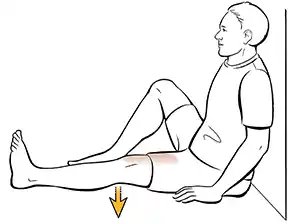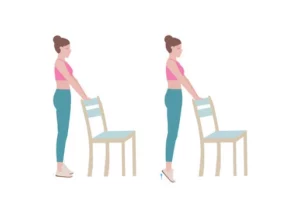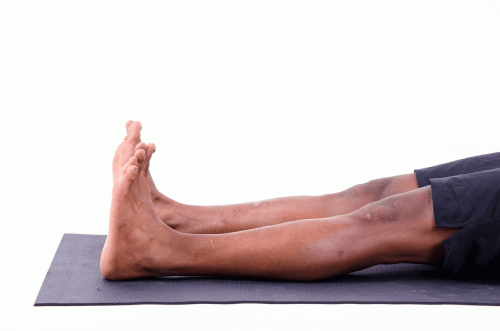The Medial Collateral Ligament (MCL) is a crucial stabilizing structure of the knee joint, and when it’s injured, it can significantly impact your mobility and overall quality of life. Whether your MCL injury occurred during sports, an accident, or another activity, the road to recovery often involves MCL physical therapy. In this blog, we will delve into the world of MCL injuries, their significance, and how physical therapy plays a pivotal role in rehabilitation.
Contents
Understanding MCL Injuries
The Medial Collateral Ligament (MCL) is located on the inner side of the knee. It connects the femur (thigh bone) to the tibia (shin bone). Its primary function is to prevent excessive lateral (sideways) movement of the knee joint, which helps maintain stability during activities like walking, running, and pivoting.
Causes of MCL Injuries:
MCL injuries are commonly associated with traumatic events or high-impact activities. Here are some common causes:
- Direct Impact: A blow to the outer side of the knee, such as in a sports collision or car accident, can stretch or tear the MCL.
- Twisting Motion: Rapid twisting or pivoting movements during sports or activities can strain or injure the MCL.
- Overextension: Hyperextending the knee joint, particularly when it is bent, can also damage the MCL.
Grading MCL Injuries: MCL injuries are classified into three grades based on their severity:
- Grade I: A mild MCL sprain involves stretching of the ligament without significant tearing. It may cause minor pain and stiffness but usually allows for normal knee function.
- Grade II: A moderate MCL injury involves partial tearing of the ligament. This can lead to more pronounced pain, swelling, and difficulty bearing weight on the affected leg.
- Grade III: A severe MCL injury is characterized by a complete tear of the ligament. It often results in significant pain, swelling, instability, and difficulty bearing weight. In some cases, a Grade III MCL injury may be associated with injuries to other structures within the knee.
The Role Of Physical Therapy In MCL Recovery
MCL injuries can range from mild to severe, and the extent of the injury often dictates the type and duration of physical therapy required. Here’s a look at the crucial role of physical therapy in MCL recovery:
- Accurate Assessment and Individualized Treatment: The first step in MCL recovery through physical therapy is a thorough assessment by a skilled physiotherapist. They evaluate the extent of the injury, assess any associated injuries, and determine the patient’s overall condition. Based on this assessment, the physiotherapist creates an individualized treatment plan for the patient’s specific needs.
- Pain Management: Pain and inflammation are common after an MCL injury. Physical therapists employ various techniques, such as ice therapy, electrical stimulation, or ultrasound, to manage pain and reduce swelling.
- Restoring Range of Motion: Following an MCL injury, the knee joint may become stiff and lose its full range of motion. Physical therapists use gentle, controlled exercises and manual techniques to restore the normal range of motion in the knee.
- Strengthening Muscles: Strengthening the muscles around the knee and in the leg is a key aspect of MCL recovery. A strong support system of muscles helps stabilize the knee joint and prevent further injury.
- Balance and Proprioception Training: Balance exercises are crucial to improve stability and coordination of the knee joint. These exercises challenge the body to adapt to different positions and movements, reducing the risk of future injuries.
- Neuromuscular Reeducation: Neuromuscular reeducation focuses on retraining the brain and muscles to work together effectively, promoting proper movement patterns, and reducing the risk of compensation or altered gait.
- Gradual Return to Activity: Physical therapists work closely with patients to create a safe and gradual return-to-activity plan. This process involves assessing readiness, monitoring progress, and providing guidance on when it’s safe to resume sports or strenuous activities.
Customized Treatment Plans For MCL Injuries
Treatment for Medial Collateral Ligament (MCL) injuries varies depending on the severity of the injury. Different treatment plans are opted for depending on the grade of the injury.
Grade I MCL Injury:
Grade I MCL injuries involve stretching or minimal tearing of the ligament. Treatment options include:
- RICE protocol: It is a crucial method for managing MCL (Medial Collateral Ligament) injuries. It involves Rest, Ice, Compression, and Elevation to reduce swelling, alleviate pain, and promote healing.
- Pain Medication: Over-the-counter pain relievers like ibuprofen or acetaminophen may be recommended for pain management.
- Knee Brace: A knee brace or sleeve may provide support and stability during the healing process.
- Physical Therapy: In some cases, even Grade I injuries may benefit from physical therapy to ensure proper healing and to prevent future problems.
Grade II MCL Injury:
These involve a partial tear of the ligament. Treatment options may include:
- Immobilization: In some cases, a knee brace or immobilizer may be prescribed to restrict knee movement during the initial healing phase.
- Physical Therapy: Physical therapy is often recommended to help restore strength and stability to the knee. Therapists will guide patients through exercises to facilitate healing.
- Pain Management: Pain medication and anti-inflammatory drugs may be prescribed to manage pain and reduce swelling.
Grade III MCL Injury:
Grade III MCL injuries involve a complete tear of the ligament. Treatment options may include:
- Immobilization: A knee brace or hinged knee brace may be required to immobilize the knee and allow the ligament to heal.
- Surgery: In some MCL injuries, especially when other structures in the knee are affected, surgical intervention may be necessary.
- Physical Therapy: Post-surgery or during non-surgical treatment, physical therapy is crucial to restore knee function, and range of motion.
- Pain Management: Pain medication is often prescribed to manage pain during the recovery process.
Exercises For Recovery Of MCL Injury
Quad Sets
- Sit with your injured leg extended.
- Tighten the quadriceps muscle by pushing the back of your knee down into the floor.
- Hold for 5-10 seconds and then relax.
- Repeat for 10-15 repetitions.
Straight Leg Raises
- Lie on your back with your legs straight.
- Tighten your thigh muscles in the injured leg.
- Lift your leg about 6-8 inches off the ground and hold for a few seconds.
- Slowly lower it back down.
- Do 2-3 sets of 10-15 repetitions.
Heel Slides
- Lie on your back with both knees bent.
- Slide your injured leg out, straightening it as much as possible while keeping your heel in contact with the floor.
- Slowly bend your knee to slide your foot back to the starting position.
- Perform 2-3 sets of 10-15 repetitions.
Clamshells
- Lie on your uninjured side with your legs bent at a 90-degree angle.
- Keep your feet touching and lift the top knee as high as you can without moving your pelvis.
- Lower your knee back down.
- Perform 2-3 sets of 10-15 repetitions on each side.
Standing Calf Raises
- Stand upright with your feet hip-width apart, using a chair or wall for balance.
- Rise up onto your toes as high as you can.
- Lower your heels back down.
- Do 2-3 sets of 10-15 repetitions.
Ankle Pumps
- Sit or lie down with your leg elevated.
- Move your ankle up and down to pump blood and reduce swelling.
- Perform this exercise for several minutes multiple times a day.
Balance Exercises
- Stand on one leg with support and gradually increase the duration as your balance improves.
- Try balancing on an unstable surface like a foam pad to challenge your stability.
Always perform exercises as instructed by your healthcare provider or physical therapist. It’s essential to start with gentle, controlled movements and gradually increase intensity and complexity as your knee strengthens and heals.
Preventing The Recurrence Of MCL Injuries
Preventing the recurrence of Medial Collateral Ligament (MCL) injuries is essential for maintaining knee stability and preventing long-term complications. Here are some strategies to help you.
- Build Muscle Strength: Focus on strengthening the muscles around your knee joint, including the quadriceps, hamstrings, and calf muscles. Strong muscles provide better support and protection for the knee.
- Enhance Flexibility: Incorporate regular stretching exercises to maintain flexibility in your knee and surrounding muscles. This helps reduce the risk of strains.
- Proper Warm-Up and Cool-Down: Always warm up before engaging in physical activities or sports. A warm-up increases blood flow to your muscles and prepares your body for exercise. After the activity, cool down with stretching to prevent stiffness and promote recovery.
- Use Protective Gear: If you participate in contact sports or activities with a risk of a knee injury, wear knee braces or supports for added protection.
- Maintain Proper Technique: If you play sports, ensure you are using the correct techniques and form to minimize the risk of injury. Proper technique can significantly reduce the stress on your knee.
- Stay Active: Engage in regular cardiovascular and strength training exercises to maintain overall fitness and joint health.
- Maintain a Healthy Weight: – Excess body weight can increase stress on your knees. Maintain a healthy weight through a balanced diet and regular exercise to reduce this risk.
- Listen to Your Body: – Pay attention to any signs of discomfort, pain, or instability in your knee. If you experience persistent issues, seek medical advice promptly.
- Professional Guidance: – Consult with a sports medicine specialist, physical therapist, or orthopedic surgeon for personalized guidance on injury prevention strategies and any specific recommendations for your situation.
- Periodic Check-Ups: – Even after recovery, consider regular check-ups with a healthcare provider to monitor the health of your knee and receive guidance on injury prevention.
Conclusion
In conclusion, the journey of healing and recovery from a Medial Collateral Ligament (MCL) injury is one that requires patience, dedication, and the guidance of skilled healthcare professionals. MCL physical therapy plays an indispensable role in this process, offering a path to not only healing but also regaining strength, stability, and confidence in your knee.
Seek professional guidance, listen to your body, and stay consistent with your exercises and self-care routines. Your knee’s health and strength are worth the effort, and by embracing the principles of MCL physical therapy, you’re taking a significant step toward a future of improved mobility, resilience, and an active, pain-free lifestyle.
Physical Therapy helps patients recover from pain. If you’re experiencing Back, Shoulder, Knee, Neck, Elbow, Hip, or Arthritis pain, a physical therapist at PhysioMantra can help: Book an online physical therapy session.











